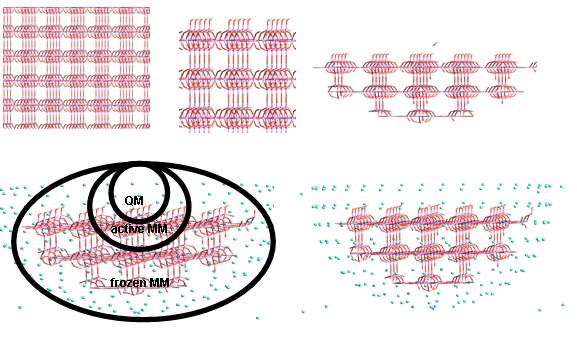|
| |
Model surfaces for gas-grain reactionsFedor Goumans and Davy Adriaens use model surfaces to assess the specific catalytic effect that surface sites and defects have on activated astrochemical reactions. CH3OH and CO2 are observed in high abundancy in interstellar ices in dark molecular clouds, despite the lack of efficient gas formation routes. It is thought that these and other less abundant molecules are formed on the surface of dust grain, although the precise mechanisms remain unknown. Fedor and Davy have used coronene to model carbonaceous dust grains, which has been shown to catalyse the formation of CO2[1] and SCO,[2] while current research focuses on defects on coronene and graphene. For siliceous dust grains an embedded cluster model of edingtonite is used (see Figure 1). Negatively charged defects in the form of silanolate (SiO-) surface sites were shown to catalyse the formation of CH3OH.[3] We are presently investigating the effect of this negatively charged surface site for other astrochemically relevant reactions, which we perceive to have a ubiquitous positive catalytic effect on the hydrogenation and oxygenation of unsaturated species.  Figure 1. QM/MM cluster set-up. Starting from the bulk edingtonite (top left), clockwise: (100) hydroxylated surface, 25 Å radius hemi-spherical surface cluster, cluster with correcting charges, and cluster divided into three regions.
This page last modified 26 October, 2007 by John Edridge |
